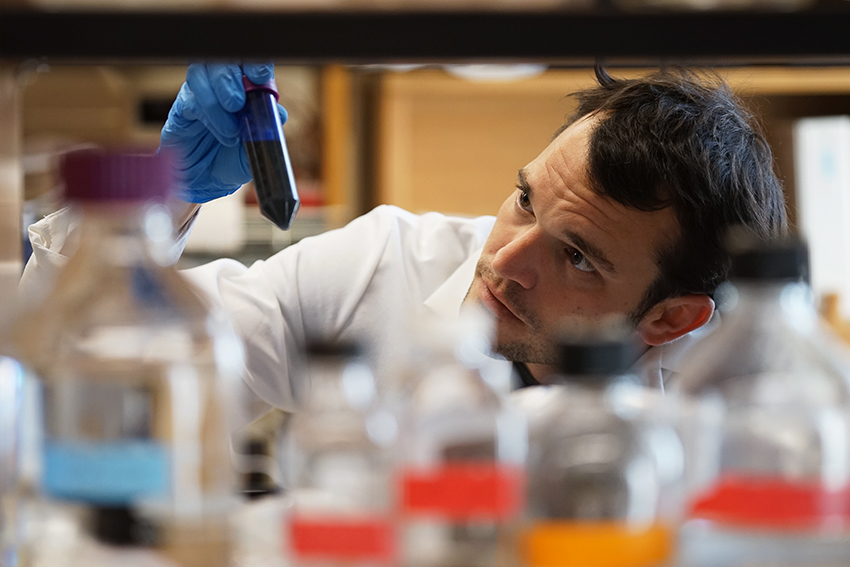The secret to cancer’s cure may come from noncancerous cells.
Molecular biosciences assistant professor Lauren Ehrlich has made significant discoveries using an innovative method of cancer research. She studies the environment of the tumor, rather than the tumor’s mutations and composition.
“There is this growing appreciation for the fact that tumors are not just an isolated tumor cell type that is proliferating or expanding out of control, but instead they exist in a complex environment,” Ehrlich said. “The environment is actually providing factors and signals to the tumor cells to help them grow.”
This approach may reveal new treatment options that are more targeted than current methods of chemotherapy. These methods are especially harmful to children, who are predominantly impacted by leukemia.
Ehrlich and her team focus on T-cell acute lymphoblastic leukemia, or T-ALL. They found that when they removed the tumor from an organism, the tumor only survived if the surrounding cells moved with it. Ehrlich said that these results indicate that changes in the environment allow for tumor growth.
Todd Triplett, a postdoctoral student and author of the study, said that the next step is to discover what specific cells, or subsets, in the tumor’s surroundings signal for more tumor growth.
“If you can find the subset and really target that subset, then you can figure out what signals they are providing the tumor cells,” Triplett said. “Only then you can hopefully have a broader therapeutic effect.”
In the type of leukemia this team is studying, the typically disease-fighting T-cells grow out of control. Ehrlich and her team found that dendritic cells, which normally keep T-cells in check, instead signal to the cancerous T-cells to keep growing. Ehrlich said dendritic cells were the last cell she suspected to promote tumor growth, since they normally kill bad T-cells.
Both Ehrlich and Triplett said their work is challenging because cancer cells can mutate in many different ways. Triplett said that if two people got T-ALL, their tumors could mutate differently, making it hard to generalize a cure.
The team’s experimental method involves taking the tumors and surrounding cells out of mice and studying them in the lab. Ehrlich says that mouse models provide more opportunities for testing than human patients do.
“We need to go back and forth between patient samples and what we can learn in basic mouse models,” Ehrlich said.
She said while the research is very exciting, the lab is far away from treatment or cancer therapies. Triplett said that he hopes the study will be a starting place from which other researchers can expand.
“Our research right now is like planting a flag. It is saying ‘Hey researchers, come here, look at this,’” Triplett said. “Hopefully our research is going to be a catalyst to bring other researchers to investigate dendritic cells and their roles, which will then translate to therapies.”
The team is currently focused on further understanding the signals and interactions between the tumors and the dendritic cells. The next step is finding a mechanism to block these signals and starve the tumor.
Wesley Godfrey, a biology junior working in the Ehrlich Lab, said that he enjoys the experiments he runs because of the information they can reveal.
“It is very important that we know as much as we can about the disease in order to develop effective treatments,” Godfrey said. “Hopefully, the research in the lab will lead to a potential treatment one day.”















